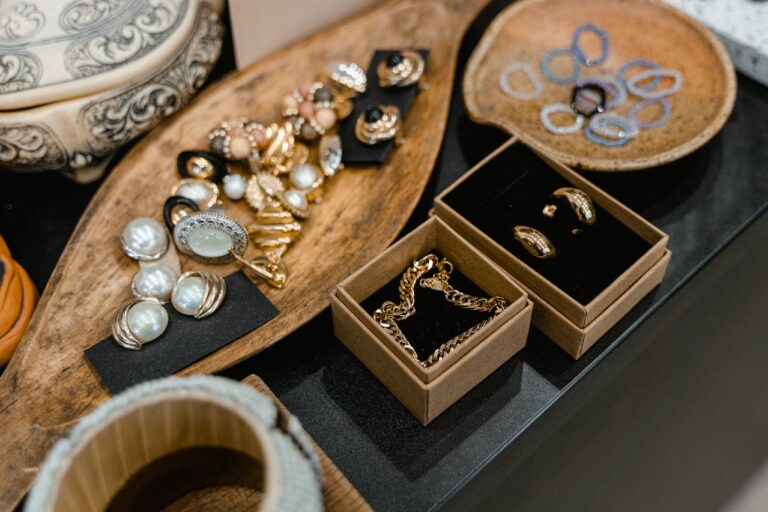That forgotten box of coins in your attic or the jewelry you inherited from your grandmother might be worth serious money. Many Texans sit on small fortunes without knowing it. Old coins and jewelry often carry values far beyond their face value or weight in metal.
Here’s why: collectors and investors actively seek rare pieces, historical items, and precious metals. The market for these items stays strong, especially when economic uncertainty drives interest in tangible assets.
Professional evaluation makes all the difference when you want accurate values for your items. Local experts like Fort Worth Coin Buyers specialize in assessing coins, jewelry, and precious metals. They understand market trends and can spot rare pieces that untrained eyes might miss.
Signs Your Coins Might Be Valuable
Start by checking the dates on your coins. Coins minted before 1965 often contain silver, making them worth more than face value. A 1964 quarter contains about $5 worth of silver at current prices, according to the U.S. Mint’s specifications.
Look for these specifics:
- Missing mint marks or errors: Coins with printing mistakes command high prices
- Low mintage years: Fewer coins produced means higher values
- Condition matters: Uncirculated coins bring premium prices
- Silver dollars before 1935: Morgan and Peace dollars contain 90% silver
The Professional Numismatists Guild reports that even common-date silver dollars trade for $25-$35 each. Rare dates and mint marks push values into thousands of dollars.
Identifying Valuable Jewelry
Weight tells part of the story with jewelry. Gold and platinum pieces feel heavier than costume jewelry. Look for stamps inside rings or on clasps. These marks indicate metal purity:
- 10K, 14K, 18K, 24K: Gold content markers
- 925 or Sterling: Silver identification
- 950 or PLAT: Platinum markers
Designer signatures increase value beyond metal content. Pieces from Tiffany, Cartier, or Van Cleef & Arpels command premium prices. Vintage costume jewelry from designers like Miriam Haskell or Eisenberg also attracts collectors.
The Gemological Institute of America notes that antique jewelry (over 100 years old) and vintage pieces (20-100 years old) often exceed their melt value due to craftsmanship and historical significance.
Testing Methods You Can Use at Home
Simple tests help determine authenticity before professional evaluation.
The magnet test: Real gold and silver won’t stick to magnets. If your jewelry attracts a magnet, it contains base metals.
The ceramic test: Drag gold across unglazed ceramic tile. Real gold leaves a gold streak. Fake gold leaves black marks.
Weight comparison: Compare suspected silver coins to known genuine ones. Fakes often feel lighter or heavier than authentic pieces.
Visual inspection: Use a magnifying glass to check for wear patterns. Plated items show base metal through worn spots.
Market Factors That Affect Value
Precious metal prices fluctuate daily. The London Bullion Market Association publishes spot prices that dealers reference. Gold might trade at $2,000 per ounce one month and $2,200 the next.
Collector demand creates value beyond metal content. The American Numismatic Association tracks auction results showing certain coins selling for 10-100 times their melt value. A worn 1916-D Mercury dime contains $2 worth of silver but sells for $1,000+ due to rarity.
Economic conditions influence buying patterns. During recessions, people sell inherited items for cash. This increases supply and can temporarily lower prices. Conversely, inflation fears drive investors toward tangible assets, pushing prices higher.
When to Seek Professional Appraisal
Get professional evaluation when you find:
- Coins dated before 1933
- Gold jewelry over 50 years old
- Any items with historical significance
- Collections inherited from collectors
- Pieces you suspect are designer items
Reputable dealers provide free evaluations. They explain current market values and make cash offers based on real-time pricing. Avoid dealers who pressure immediate sales or won’t explain their pricing.
Next Steps
Sort your items by type before evaluation. Keep coins in protective holders to prevent damage. Don’t clean anything—cleaning reduces value for both coins and antique jewelry.
Research recent sales of similar items on heritage auction sites. This gives you baseline knowledge before meeting dealers.
Your old coins and jewelry might fund a vacation, pay off debt, or start an investment account. Professional evaluation reveals their true worth. Texas has numerous qualified dealers ready to assess your items and make fair offers based on current market conditions.


